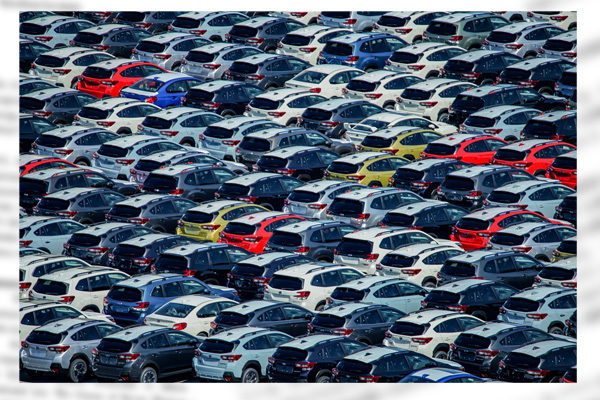The U.S. Trump 2.0 administration’s high-tariff guns, including an additional 25% tariff on auto imports, are taking on the semblance of indiscriminate shooting. High tariffs are certainly effective against China that takes advantage of the global free trade system for dumping exports. Shooting Japan and other Western countries, however, could cause a disaster for the U.S. economy itself.
Higher tariffs leading to lower economic growth
President Donald Trump believes that raising tariffs will make the American people more affluent. But such belief is too crude. The coefficient of correlation between average U.S. import tariff rates and real gross domestic growth rates between 1946 and 2024 stands at a negative 0.83, according to my calculation using computer software. It means that economic growth is more than likely to decline in response to higher tariffs and rise in response to lower tariffs. Not only the United States, but also many countries including Japan, have benefited from U.S. tariff cuts.
China among others has been the largest beneficiary. It took advantage of its reform and opening-up policy since the late 1970s and its accession to the World Trade Organization in 2001 to attract foreign investment and improve its technological levels to rapidly increase exports. The authoritarian regime of the Chinese Communist Party has promoted military expansion based on economic growth. Standing in the way was the Trump 1.0 administration, which was inaugurated in 2017 and imposed punitive tariffs on China. In 2020, the average tariff rate on all imports into the U.S. was 2.8% against more than 20% on imports from China.
Under the MAGA (Make America Great Again) slogan, Trump seeks to reinstate U.S. manufacturing through high tariffs. He may increase additional tariffs on Chinese imports from the earlier-set 20% by 25 percentage points for the reason of China’s crude oil imports from Venezuela. Under Trump 1.0, many Chinese companies gave up on passing tariff hikes on to the price of their exports to the U.S. and had to pay the tariff themselves. In contrast, U.S. consumers were blessed with Chinese products that remained cheap despite U.S. tariff hikes.
China trying to divide Japan and the U.S.
However, companies including automakers in Japan, Europe and other U.S. allies and friends pass much of the additional tariff on to their selling prices. As additional tariffs are expected to increase upside pressure on U.S. inflation and interest rates, financial markets have destabilized.
If economic uncertainty increases in Japan due to a decline in exports to the U.S., pro-China parliamentarians, bureaucrats, and business leaders may become more pro-China. China’s Xi Jinping government may take advantage of this development to drive a wedge between Japan and the U.S. China is also trying to embrace South Korea to conclude a Japan-China-South Korea free trade agreement. Japanese Prime Minister Shigeru Ishiba has been soft on China. During his U.S. visit in February, Ishiba pledged to expand Japanese investment in the U.S. to help revive the U.S. manufacturing. But he may become hesitant in implementing the pledge.
Hideo Tamura is a Planning Committee member at the Japan Institute for National Fundamentals and a columnist for the Sankei Shimbun newspaper.


